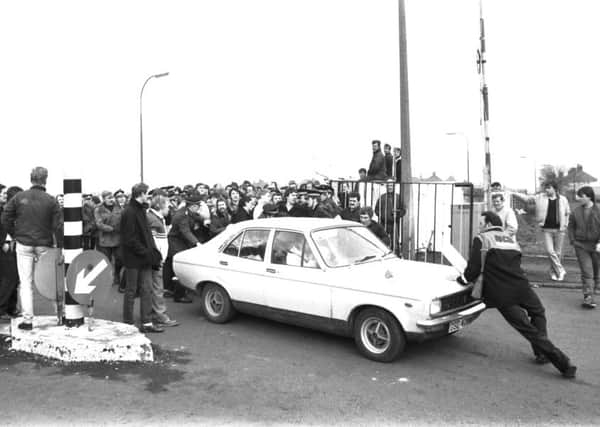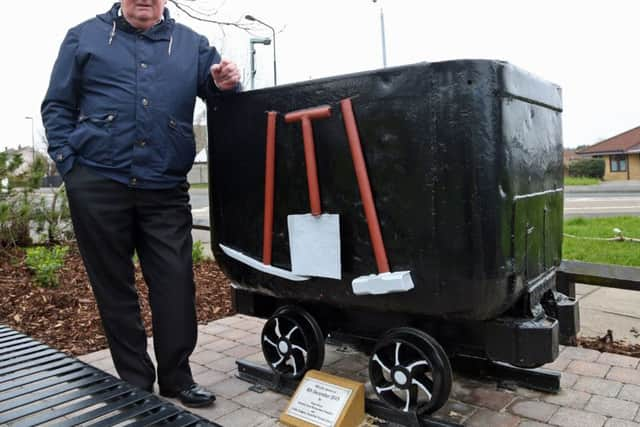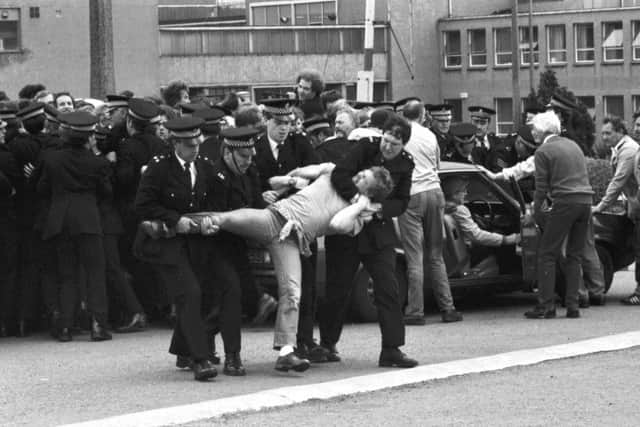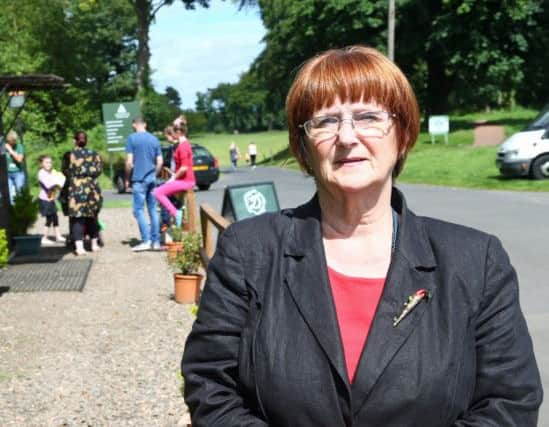Police and the miners' strike: What happened in Lothian


The pits they fought to save are all closed now, but former miners like Alex Bennett hope the inquiry under way into the policing of the strike and the impact on communities will bring into the open what happened as tensions rose during a key episode of Scotland’s recent past.
Miners at Monktonhall colliery, near Musselburgh, and Bilston Glen, near Loanhead, joined thousands of others across the UK in walking out after the National Coal Board announced plans in March 1984 for 20 mines to close with the loss of 20,000 jobs.
Advertisement
Hide AdAdvertisement
Hide AdThe dispute pitched the miners into a direct conflict with Conservative prime minister Margaret Thatcher and there were violent clashes between police and pickets at various places, including most famously the Orgreave coking plant near Rotherham.


Alex Bennett, who was chair of the National Union of Mineworkers at Monktonhall, says miners had always had good relations with the police locally before the strike. “At Danderhall the miners’ club has got the bowling green and Lothian & Borders police played their annual bowling competition there every year. There were members of the club and they used to have a drink with us. But that changed, which is sad.”
Even then, he says, local police were not involved in any of the “bother” which followed a change in police tactics in June 1984, after the so-called Battle of Orgreave.
“There were no local police that I knew on the picket line after June, it was all strangers and it was snatch squads.
Advertisement
Hide AdAdvertisement
Hide Ad“It was a clear change. Virtually nobody had been arrested up until that time here. But the snatch squads were just arresting anybody for nothing.”


In the Lothians, a token picket of six was maintained most of the time at Monktonhall while the mass pickets took place at Bilston Glen. Mr Bennett says there was little violence here, though often “a bit of pushing and shoving” when the police and pickets came face to face.
“I never saw the police up here raising truncheons or riot shields. But they did have snatch squads and they were making mass arrests.
“I was snatched by one of the snatch squads. They went for the union officials and they knew our names.
Advertisement
Hide AdAdvertisement
Hide Ad“The original charges were for rioting but that wasn’t going to stick so they changed it to breach of the peace. It was the first time I’d ever been in a court.”


He was found guilty and fined £100 – but it didn’t end there.
The man in charge of the coal board in Scotland, Albert Wheeler, took a hard line and insisted on dismissing anyone who had been convicted of any offence during the strike.
Mr Bennett was blacklisted and could not get work for three years after the strike. Altogether he says around 116 were sacked in a similar way in Lothian.
Advertisement
Hide AdAdvertisement
Hide Ad“There were mass sackings in Scotland that didn’t happen anywhere else. A number of pickets came up from Durham in June and there were a few of them arrested, but not one miner from the Durham coalfield was sacked. It was a different attitude from the director in Durham.”
Former spy chief Dame Stella Rimington has revealed that MI5 tapped union leaders’ phones during the strike.
And Mr Bennett recalls how the miners here suspected their phones were also being tapped – and proved it.
The union had decided to stage a protest inside the coal board’s Green Park offices in Edinburgh. “We used the phones to say there was going to be a picket at Blue Circle cement works at Dunbar because they were moving in coal. Of course, 300 police turned up there and there wasn’t one miner there.
Advertisement
Hide AdAdvertisement
Hide Ad“We walked into Green Park and made our protest and we left and there was no bother, no arrests and no police.”
Danderhall and the other former mining communities have changed a lot in the past 30 years, but Mr Bennett says mining is still part of their identity.
He says: “The miners club helps sponsor the amateur football team and they call themselves Danderhall Miners Amateur Football Club and the chairman, whose dad was a miner, is adamant they keep that name.”
The review of the policing of the strike announced by the Scottish Government in June and led by human rights lawyer John Scott QC is holding a meeting tonight at the National Mining Museum, Lady Victoria Colliery, Newtongrange, from 6pm until 9pm, to hear from those affected.
Advertisement
Hide AdAdvertisement
Hide AdMr Bennett says the union will be making a detailed submission to the review. “We’ve got loads of records going back to the strike,” he says.
“But we want to encourage individuals to put in their points of view too.” We’re not arguing for compensation or anything like that, just for the truth to come out.”
Lothian Labour MSP Neil Findlay led the fight for an inquiry. He says: “These hearings are vital as they will allow people who had an interest or involvement in the strike and the policing of it to provide first-hand evidence of their experiences. This is their opportunity to contribute to what I hope is a first step on the way to achieving justice.”